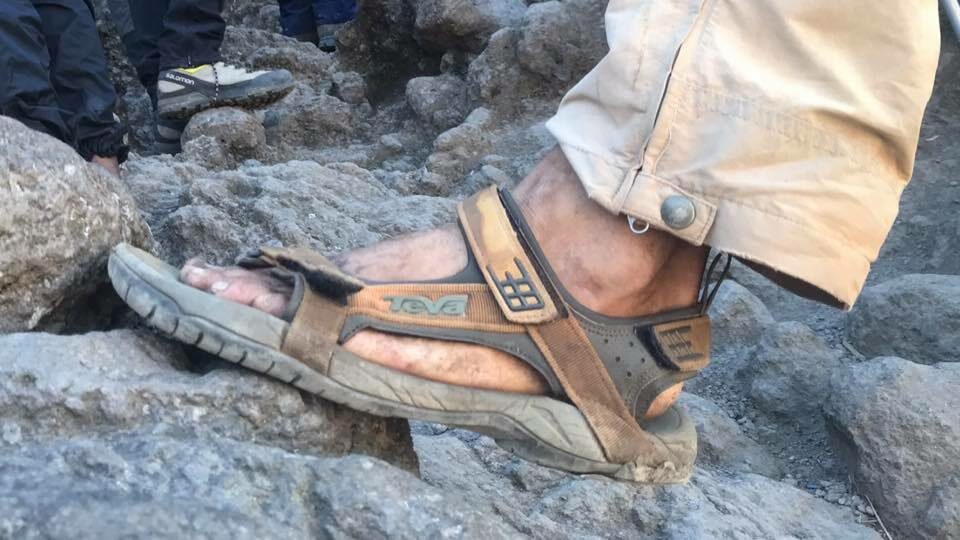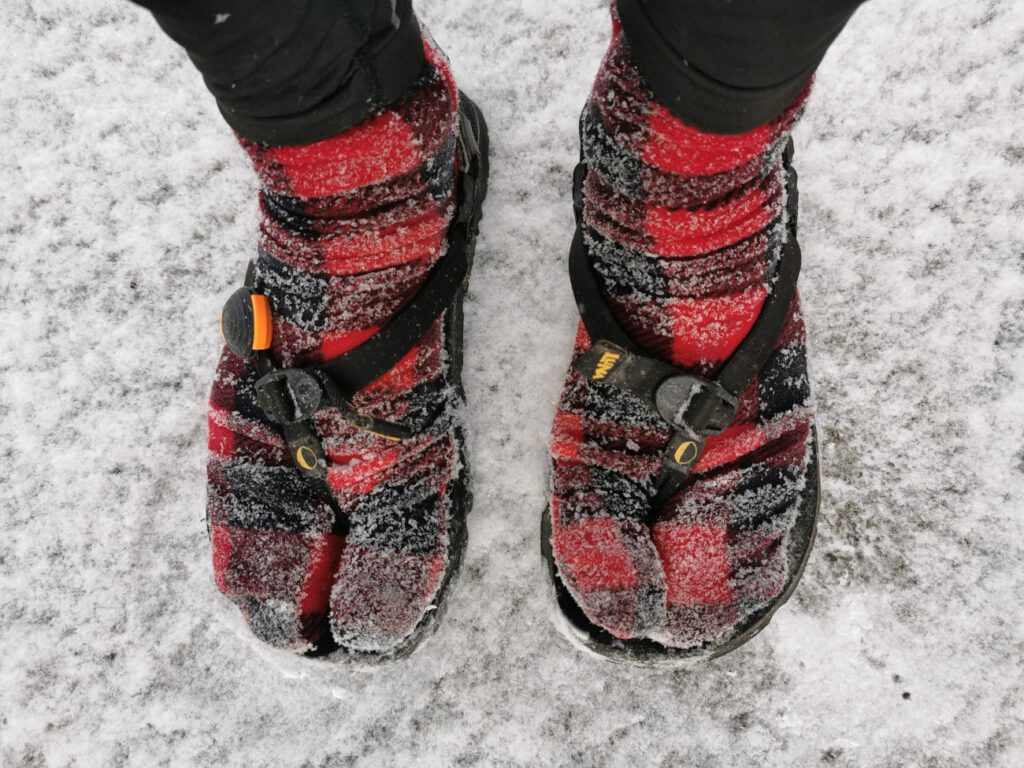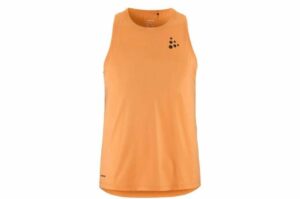Running in sandals: what you should know
Thinking of making the leap? Consider the perks and potential stumbling blocks

The thrill of cruising with the top down isn’t just for convertible owners. From first-time trail runners to Quebec Mega Trail record holder Sangé Sherpa of Nepal—who recently bared all on Instagram—spring is the perfect season for stepping into the world of sandal-running. The light, airy freedom that sandal-running affords makes it an option well worth exploring, but with those perks come pitfalls that are often only learned through experience. Take a shortcut to sandal-running success with these six tips.
Explore your options
While still very much a niche market, interest in running sandals has seen explosive growth in recent years. So, too, has the number of brands and designs offering unique takes on sandal-running. Some of the brands the uninitiated can check out include Luna, Xero, Teva, Bedrock and Earth Runners, whose offerings run the gamut from traditional huaraches to more sleek and modern gear. The shopping experience can be just as diverse; although you won’t find running-sandals carried by many brick-and-mortar running-shoe retailers, camping and outdoor outfitters often have trail and running-sandal models in stock. If your shopping preferences swing to the other extreme, some brands will allow you to send them your measurements—or even a traced outline of your foot—online to ensure you get the right fit without having to leave your home.
Adjust your expectations
The phenomenal success of Christopher McDougall’s bestselling 2009 book Born to Run: A Hidden Tribe, Superathletes, and the Greatest Race the World Has Never Seen helped spur the belief that, when it comes to footwear, less is more. (McDougall recently published Born to Run 2: The Ultimate Training Guide, along with Eric Orton.) Those dipping a toe into the world of sandal-running often do so on the premise that running with a thinner (or no) cushion will result in a gait that strengthens the muscles and tendons in the feet, ultimately leading to fewer injuries and better performance.
According to a 2016 study, this might be correct—but only if you’re one of the lucky ones. Researchers concluded, in part, that most runners who are used to conventional footwear “do not automatically adopt a running technique that reduces [load rates] when barefoot.” Research published in 2020 shows that runners sporting minimalist footwear will not necessarily develop stiffer tendons compared to those running in conventional footwear, and for runners who do not, “it is possible that minimalist footwear may increase injury risk.” In short, adopting minimalist footwear, such as sandals, might benefit some, but its promise of being a surefire solution to becoming a stronger, faster runner doesn’t always pan out.

Adjust everything else
As is the case with conventional running shoes, your first kilometres in a new pair of running sandals can be a bumpy introduction as hot spots and other quirks emerge. This “getting to know you” phase has the potential to be longer and more uncomfortable in sandals than it is with running shoes, however, given that running-sandal straps tend to be so adjustable and customizable to different parts of the foot. Experimenting and tweaking the length and positioning of your straps will lead to a more comfortable, bespoke fit in the end—just be prepared for a longer, more blister-filled breaking-in period before you get there.
Beware slippery soles
With the variety of materials and designs available, you can find running sandals suitable for just about any terrain. But if sandals have one Achilles heel, it’s mud—particularly when it’s as viscous as motor oil. Sandal-runners must consider not only the traction their footwear provides, but also the traction of their feet where sole meets sandal. Particularly slimy mud will lubricate your soles and have you slipping inside your footwear with every step, even in the best-fitting sandals. Trail-running can be an exhilarating, almost liberating, experience in sandals, but it pays to pack a trusty pair of shoes in case of a muddy emergency.
Grow a thick skin (and not just on your feet)
Know that on every run there’s an excellent chance a loudmouth will point and laugh at the runner wearing “flip-flops” or chime in about “real” runners wearing shoes. Try to take it in stride.

Don’t be afraid to explore your eccentric side
While it comes with its own set of challenges and peculiarities, sandal-running can broaden your running experience for the better. You might just find yourself in some strange places you never thought sandal-running would take you–like sprinting down a snowbank during a blizzard or finishing a beachfront 5K waist-deep in churning waters. Don’t be surprised if your minimalist footwear maximizes your appetite for quirky adventures.

